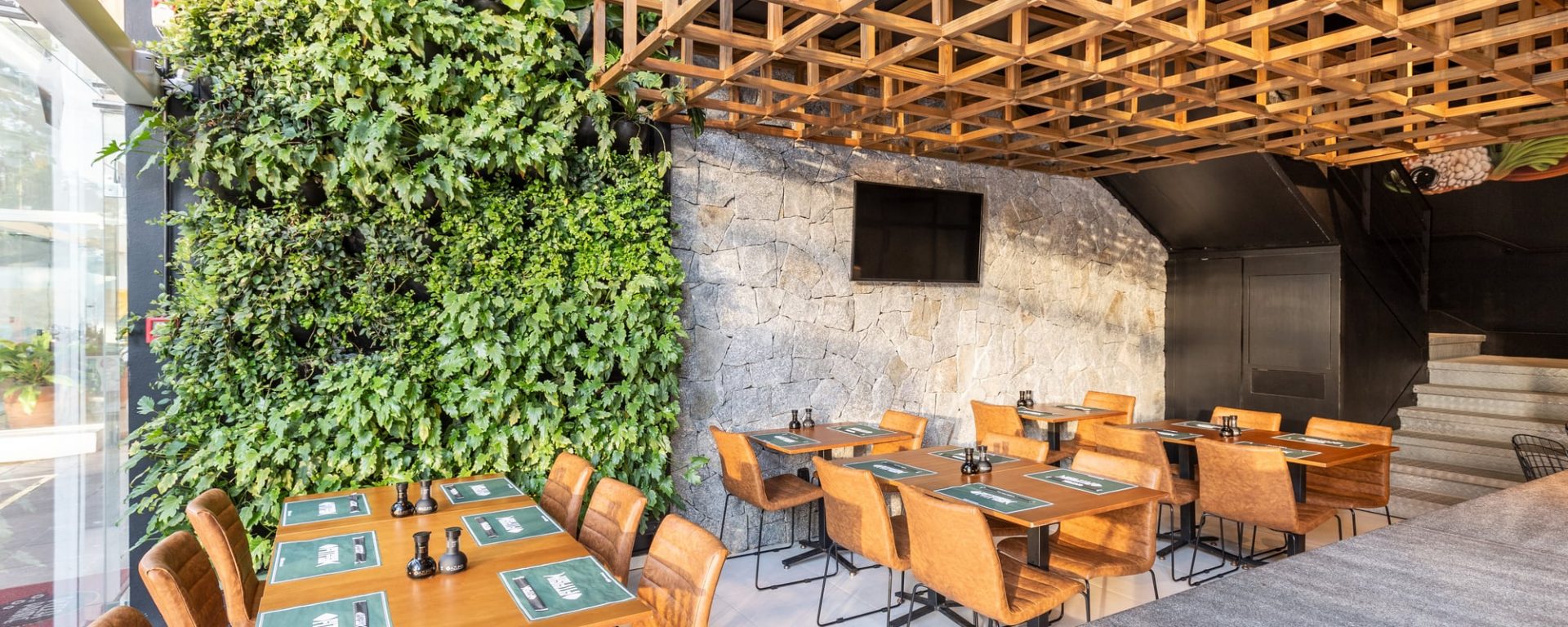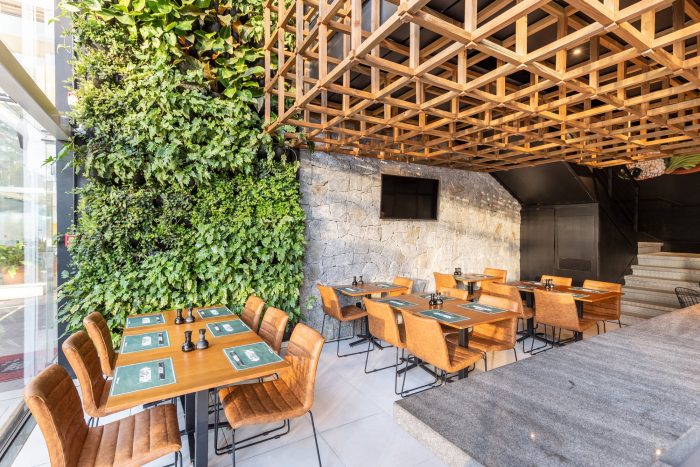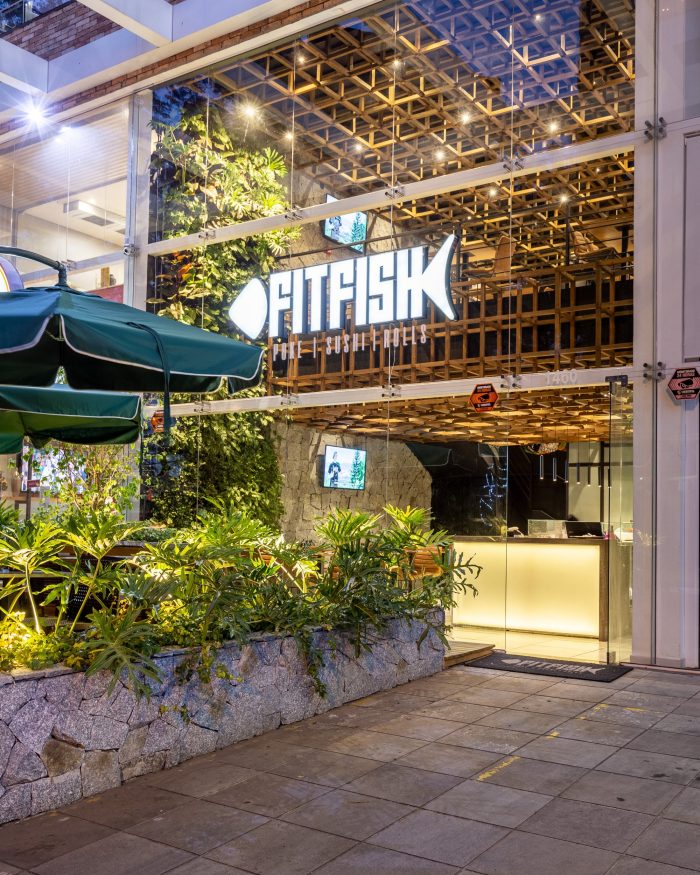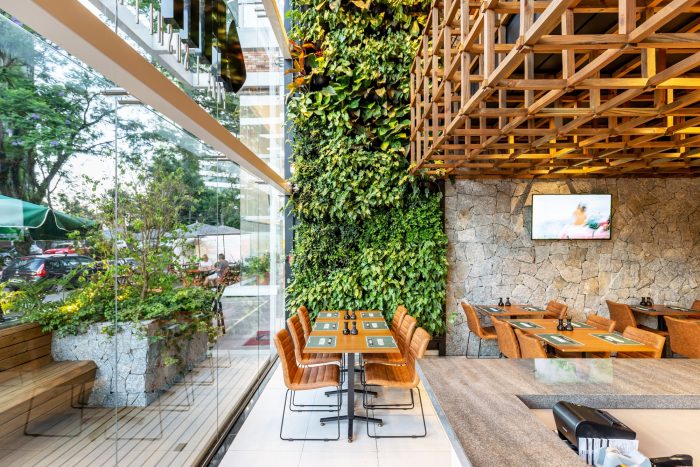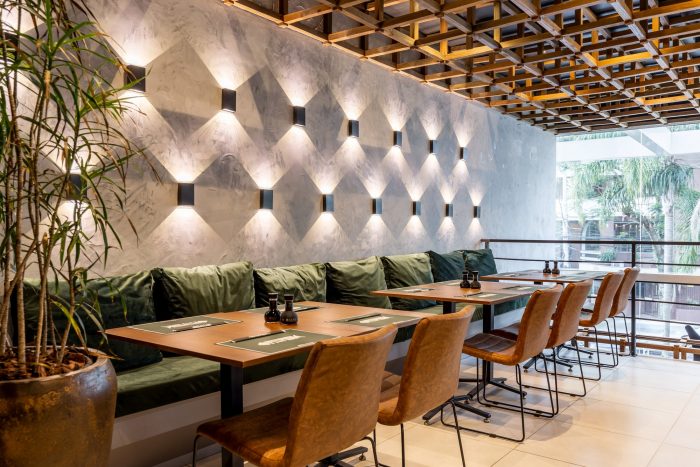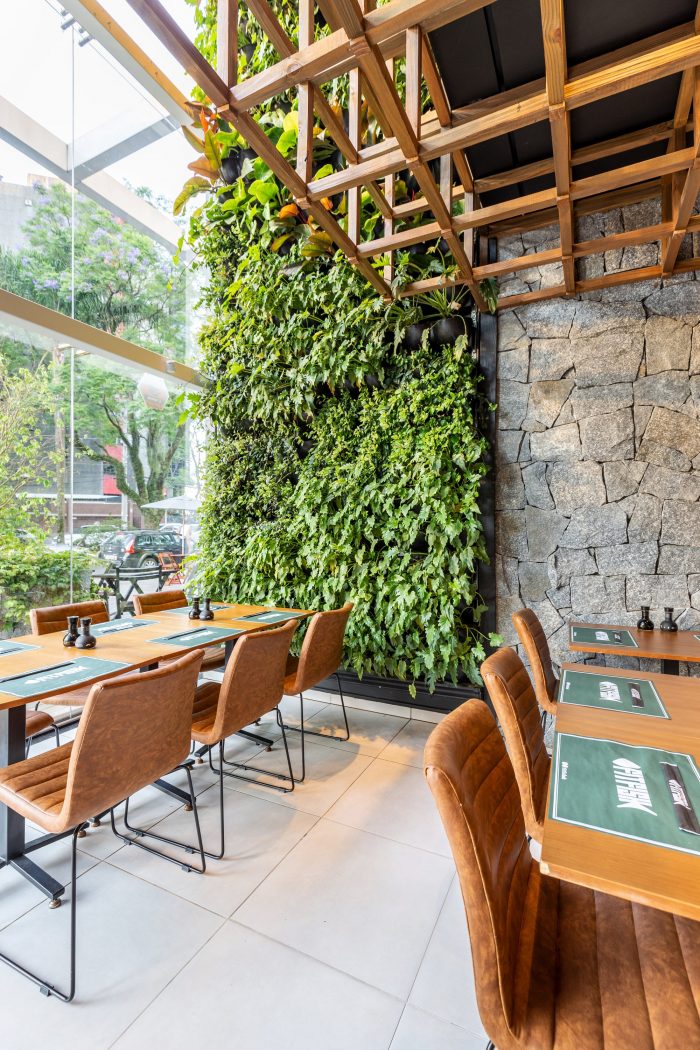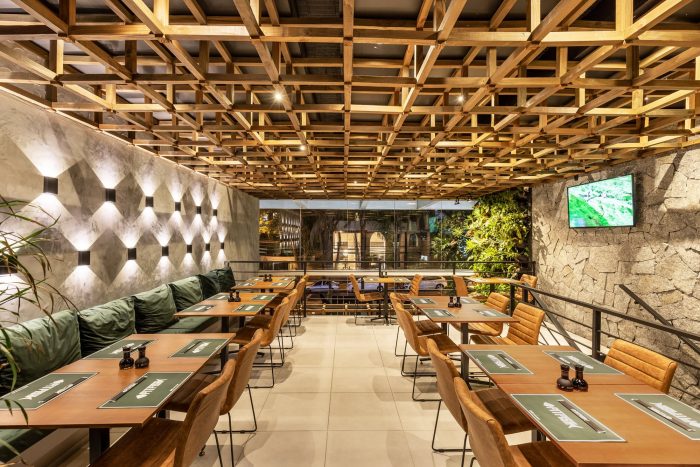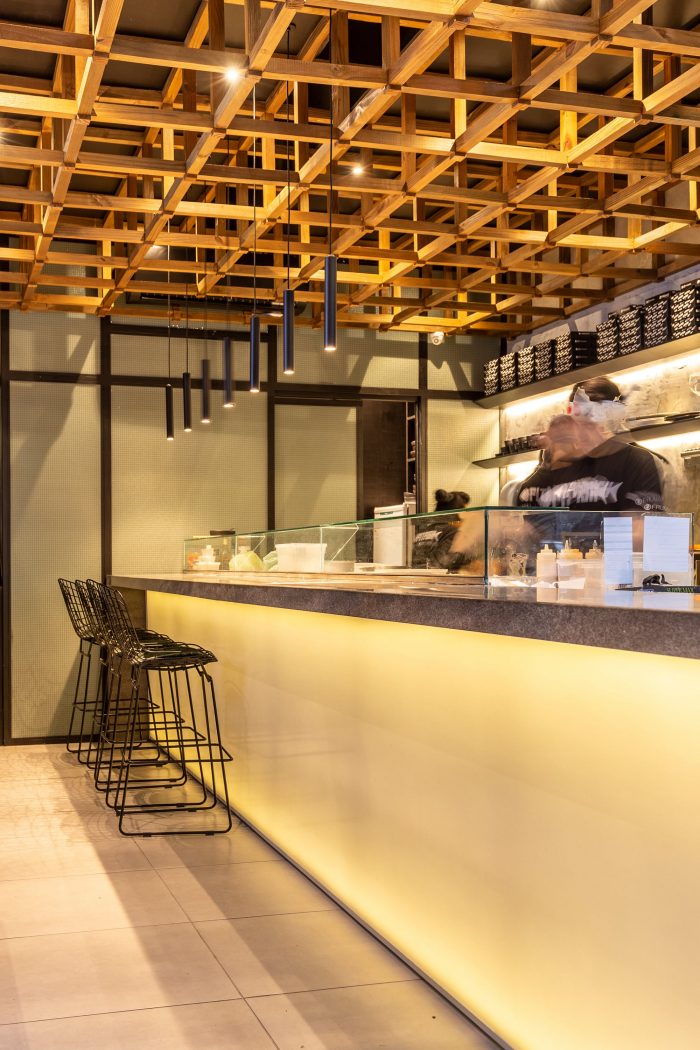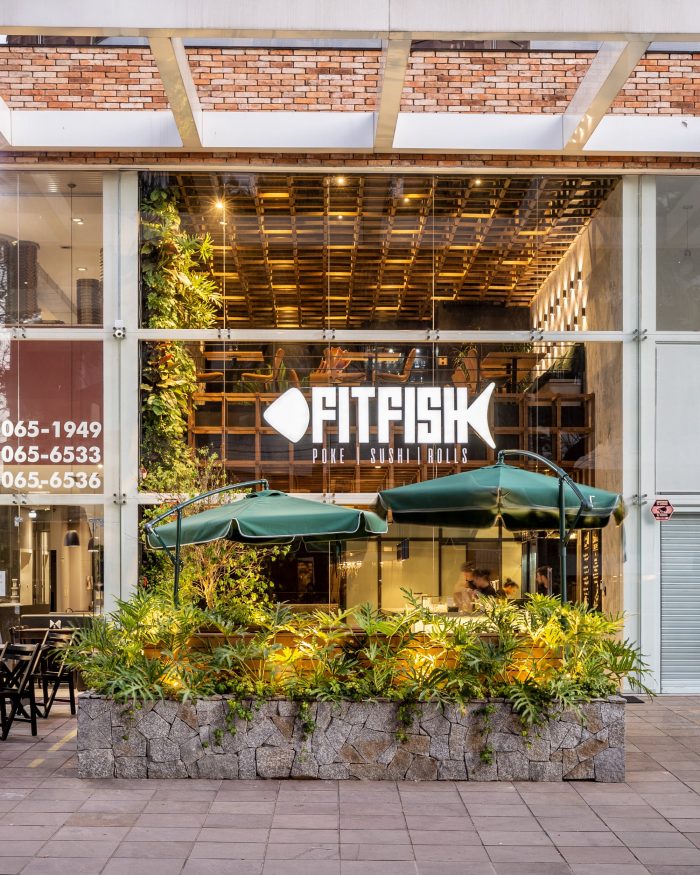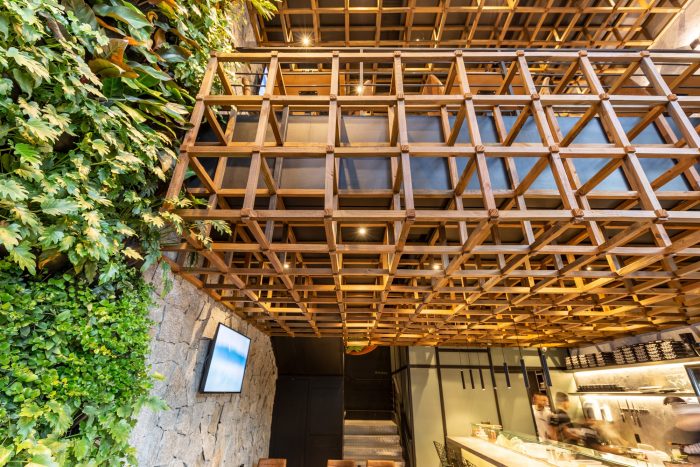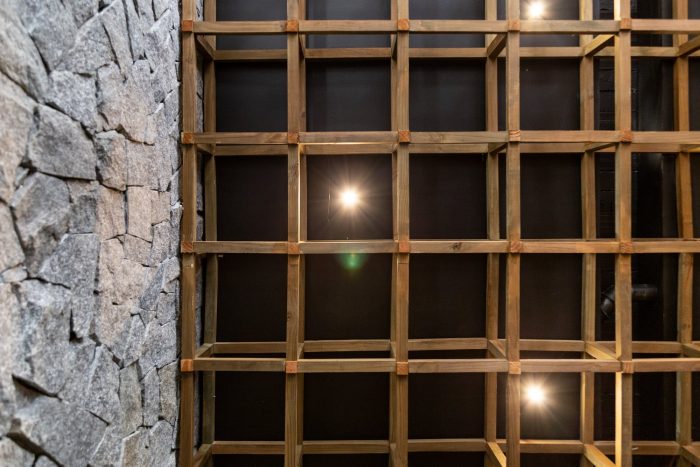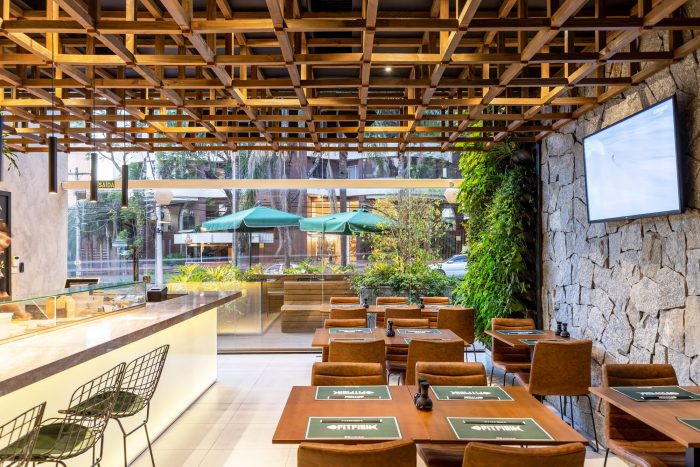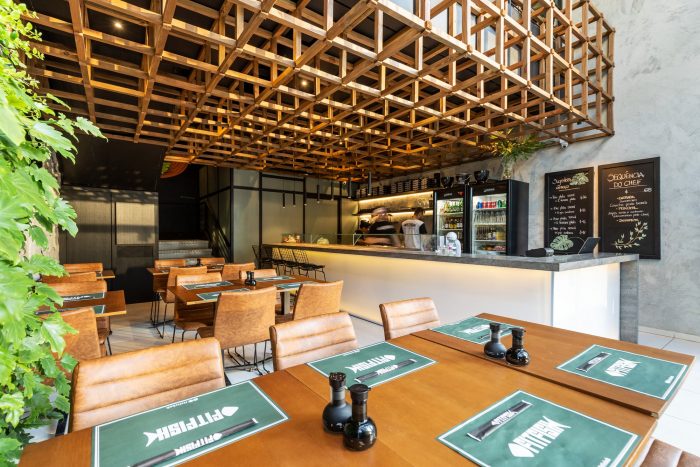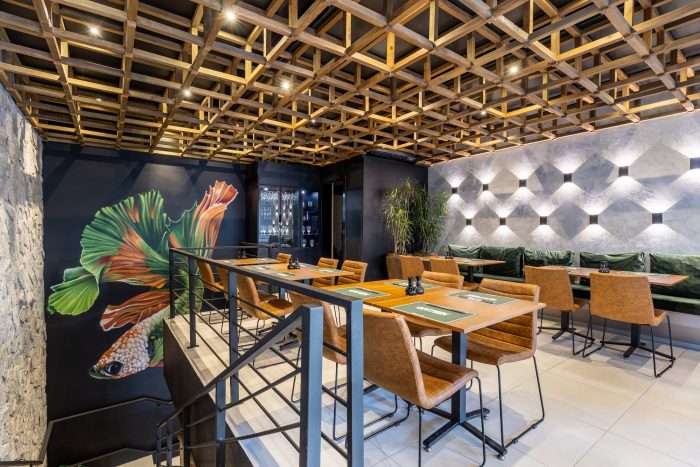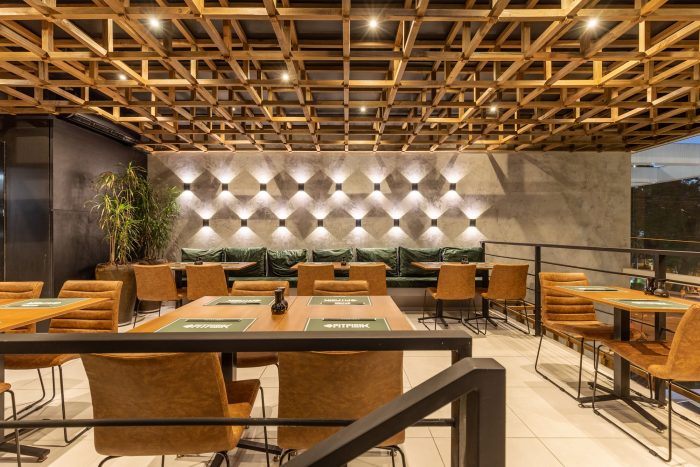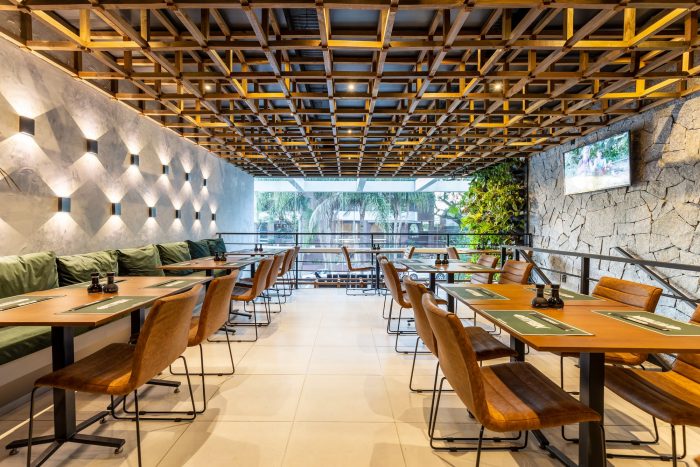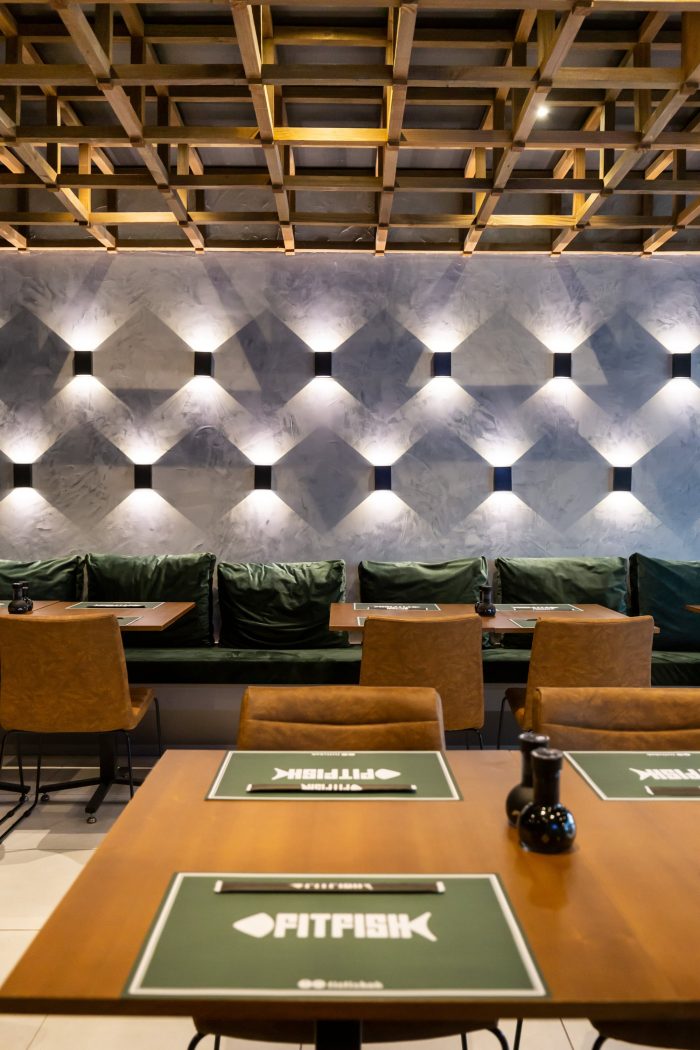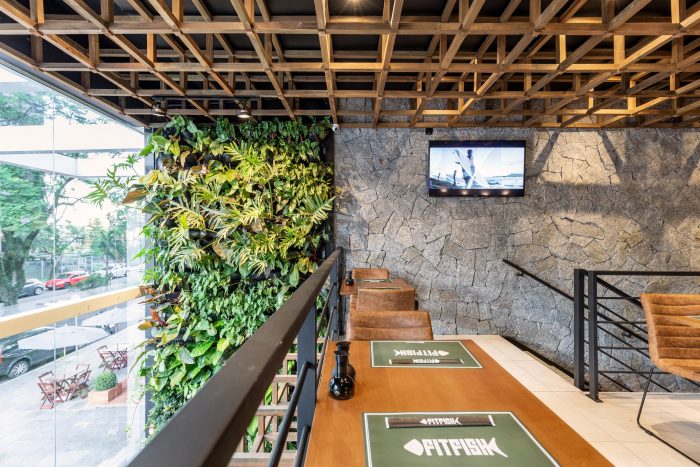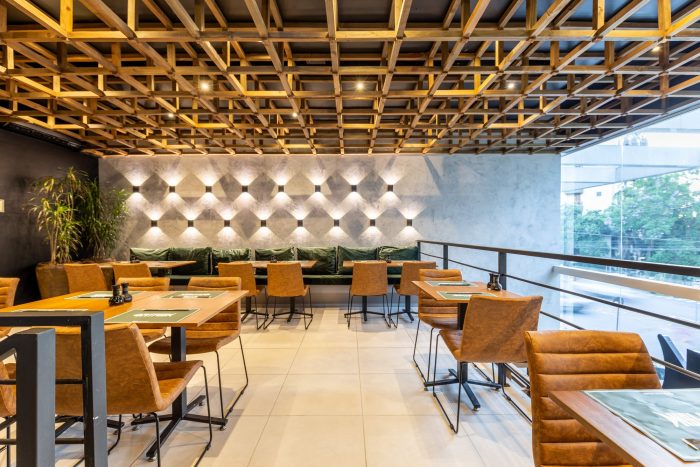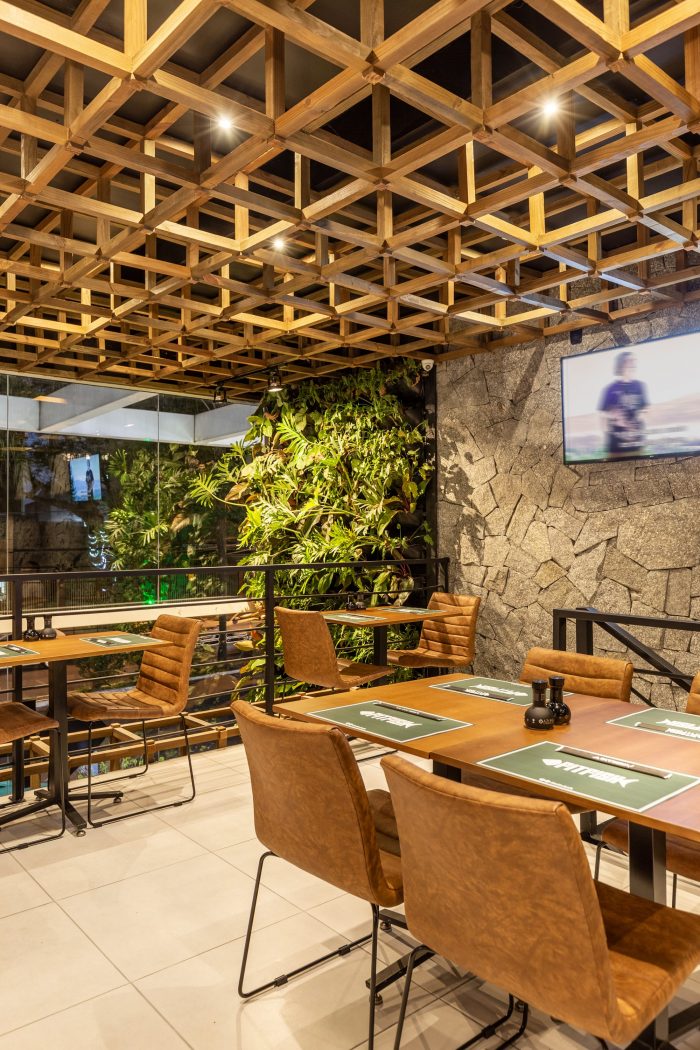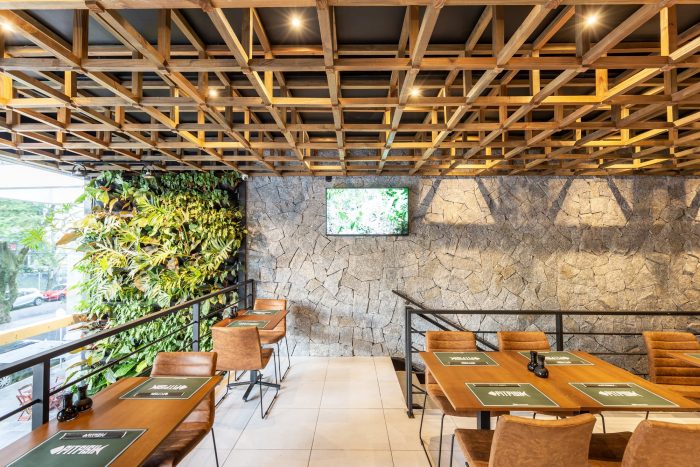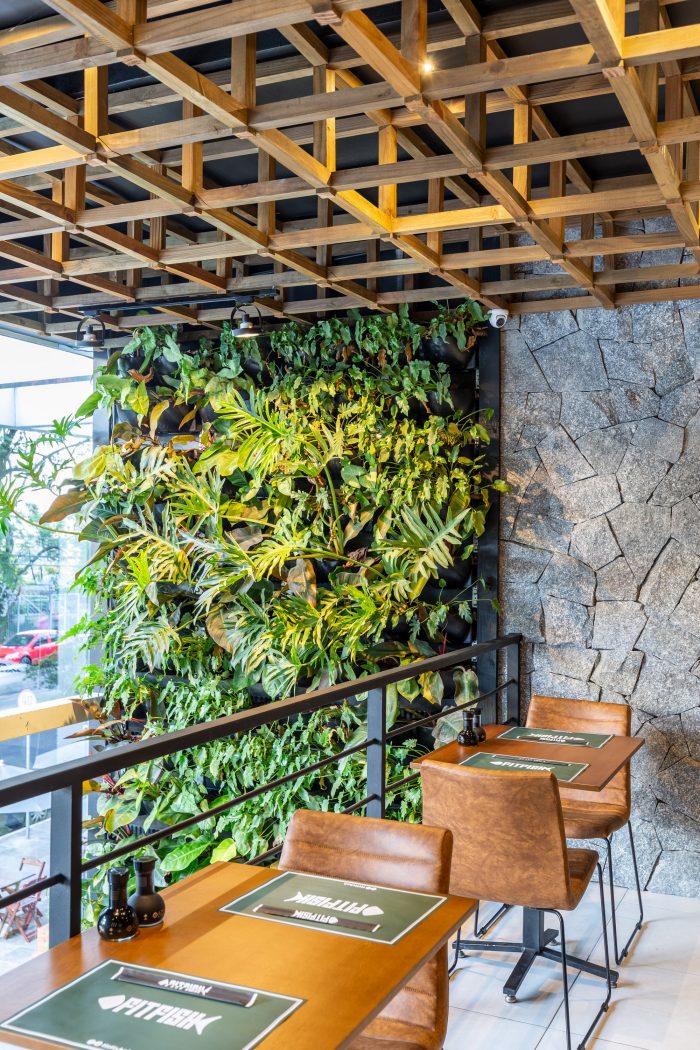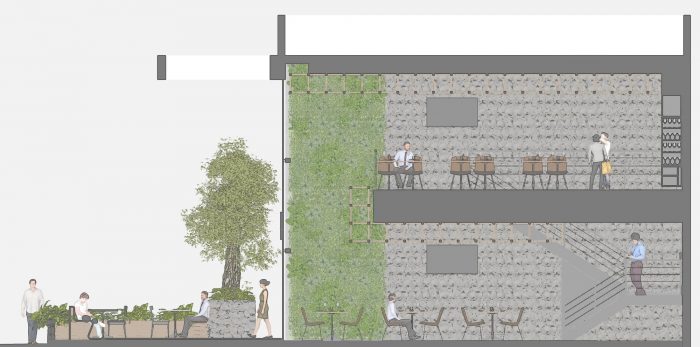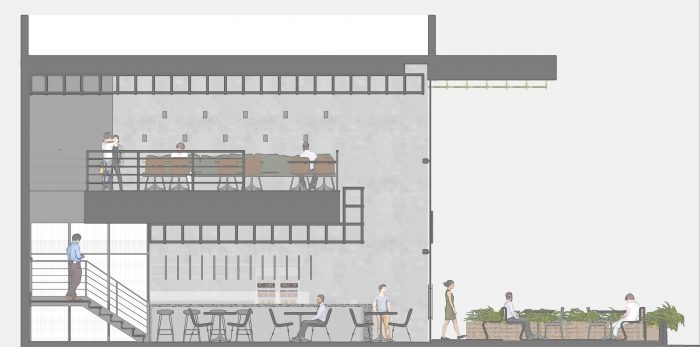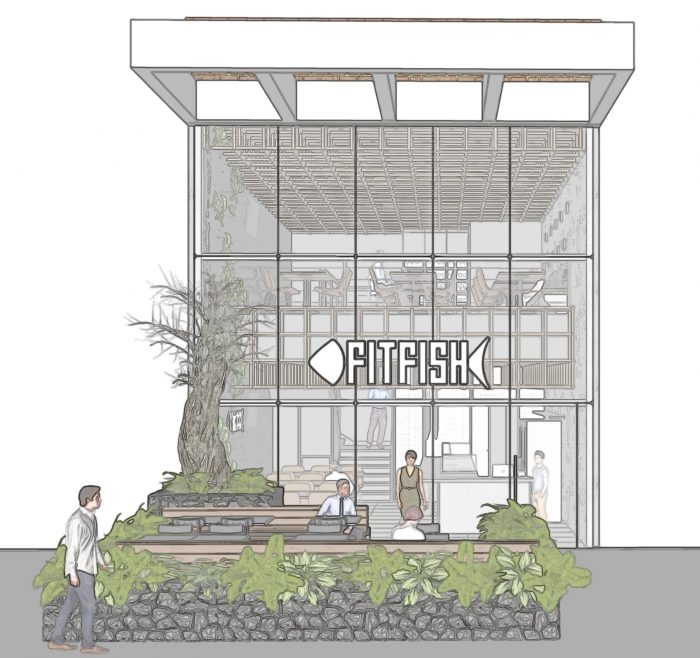当代人对重新连接基本事物和自然的需求是这个项目的主要指导方针,在这里可以放慢城市生活的快节奏,即使是很短的时间,以便抓住时机,为自己花时间,享受良好的美食,享受悠闲的用餐,从而提高享受这个地方的人的生活质量。
The contemporary need to reconnect to what is essential and to nature was the main guideline of this project, a place where it is possible to slow down the fast pace of city life, even if for a short time, in order to seize the moment, take time for yourself, to enjoy a good gastronomy, enjoy a leisurely meal and thus improve the quality of life of those who enjoy the place.
该餐厅位于新汉堡市/RS的一条繁忙的大道上,行人流量大,当地商业量大,有一个适合户外运动的空间。针对关注健康饮食的观众,这里提供日本和夏威夷美食的戳戳和菜肴。通过饮食多样性的建议,我们创造了一个亲密的环境,提出与自然和原始状态的元素互动。石头的使用,覆盖在进入餐厅前的阳台上的岩石,在内部的两层楼中也是如此。另一方面,在衬里中发现的木材形成了一种网状,覆盖了整个餐厅区域,加强了空间的自然特征并成为其基本组成部分。
The restaurant is located on a busy avenue in the city of Novo Hamburgo / RS, with a large flow of pedestrians, good volume of local commerce and a space suitable for the practice of outdoor exercises. Aimed at an audience attentive to healthy eating, the place serves pokes and dishes from Japanese and Hawaiian cuisine. Through a proposal of culinary diversity, we created an intimate environment that proposes an interaction with nature and with elements in their original state. The use of stone, rock that covers the balcony that precedes the access to the restaurant, is the same found on the two interior floors. The wood found in the lining, on the other hand, forms a kind of mesh that covers the entire restaurant area, reinforcing and being a fundamental part in the natural character of the space.
热带特色的植被,以jabuticabatree为主角,从甲板上的种植槽开始,以位于其前面的垂直花园的形式进入内部区域,带来了三个餐饮空间之间的视觉连接:外部阳台,更多的是剥离,可容纳15人;底层,可容纳22人;最大的一个,位于上层,有26个座位。这三个食品区由相同的元素连接;然而,它们与每个环境产生不同的感官体验,此外还有对公共空间的不同看法,每个空间都有独特的观察角度。
The vegetation of tropical character, which has a jabuticabatree as its protagonist, starts at the deck planters and proceeds to the internal area in the form of a vertical garden located at its front, bringing a visual connection between the three dining spaces: the external balcony , more stripped, with capacity for 15 people; the ground floor, with capacity for 22 people; and the largest one, on the upper floor, with 26 seats. These three food areas are connected by the same elements; however, they generate different sensory experiences with each environment, in addition to different perceptions of the public space, each of which has a unique viewing angle.
餐厅的技术部分–收银台、准备工作、厨房和厕所–被扇形排开,从而减少了其占用率,并优先考虑了餐桌区域。用于准备寿司的同一柜台也用于收银,并创造了一个视觉单元,通过安装在柜台底部的背光板来加强。
The technical part of the restaurant – cashier, preparation, kitchen and toilet – was sectorized in line, thus reducing its occupancy and prioritizing the table area. The same counter that serves to prepare meals for sushi, also serves for the cashier and creates a visual unit, reinforced by a backlit panel installed at the bottom of the counter.
Architects: Studio Bloco Arquitetura
Area : 94 m²
Year : 2019
Photographs :Marcelo Donadussi
City : Hamburgo Velho
Country : Brazil

